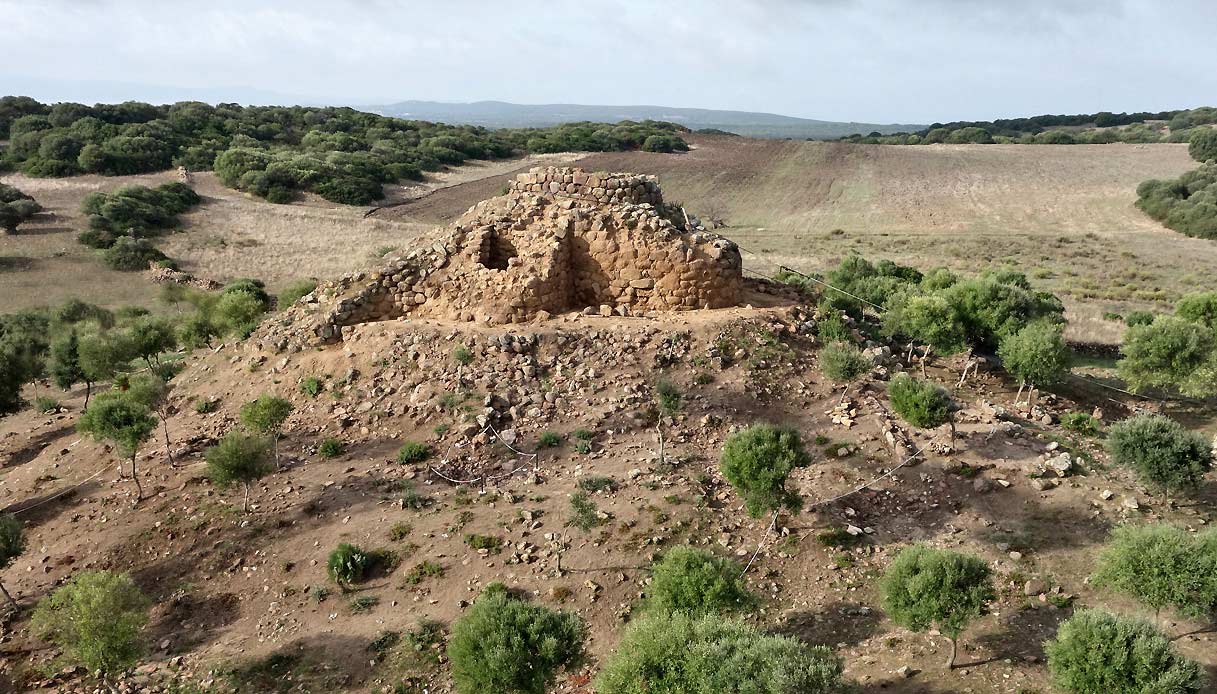Mount Sirai’s Nuragic Fortress 0 Commentaires

According to experts, this is "the only site where the most recent phase of the Nuragic civilization is recognized, contemporary with the Phoenician one and with visible documents (architecture, ceramic production, technology, etc.)". Mount Sirai’s Nuragic fortress, (3 Km from the city of Carbonia), a unique site in the whole Mediterranean, is one of the Nuragic monuments of more interest in Sardinia also because, unique of its kind, it is surrounded by defence embankments and is documented by visible evidence. It is 327 km from Gabbiano Azzurro Hotel & Suites and 3h 30 minutes by car. A site dedicated to those who want to live Sardinia, travelling the island, to discover its treasures, its beauties, its thousand-years history, for a unique tourism filled with emotions and experiences.
Upon arrival, the sight wanders in a large area of well-ordered stones, of unearthed stones which, however, hypothesize as many being still underground and udiscovered. Of its ancient glory only the stones, the bones of the earth remain. Bones buried in Mother Earth, virtually roots of life. The comparison, which comes to us from remote texts, where stone represents the roots of divine creation, is fantastic.
But by visiting it, slowly the fortress tells us its interesting history and helps us find the identity of the specific era in the Sardinian territory. In fact, we discover that the internal village was dedicated to many craft activities so as to make one think of a sort of large fortified production area, at the service of the Mount Sirai zone. The discovery of the oldest glass workshop of the island is surprising. Furnaces for high-heating pottery, for limestone, a laboratory for leather processing and also the remains of forges for metalworking have been found. A system of channelling rainwater was also discovered, which regulated the distribution of water from the top to the foot of the hill.
The Nuragic fortress dates back to the Iron Age, between 750 and 550 BC., and incorporates an older complex of the very Nuraghe, from the Bronze Age, from 1400 to 1300 BC. The site was inhabited by Nuragic and Phoenician people and testifies an integrated Sardinian-Phoenician community, where they coexisted in harmony, in an exchange of products, skills and techniques. And perhaps the glass workshop is the result of an exchange of skills.
Then came the Carthaginians in 540 BC. who decided to conquer Sardinia. Carthage extended and fortified the inhabited centre with a wall made of several rows and blocks of worked stone. Life in Mount Sirai spent quiet for about two centuries until the Punic war began between 264 and 241 BC. Around 110 BC. the inhabited area of Mount Sirai was all of a sudden abandoned, and the cause is unknown. Conjectures were made that the site had been destroyed by unspecified barbarian populations but it seems to be pure legend, as it is more likely that the settlement was voluntarily abandoned, perhaps following a natural weather event or water shortage.
“All the ruins are beautiful to look at. Perhaps it is because the mystery has put itself in the place of the stone, and now the stone feels to be something more than a stone. It thinks to be history and legend.” (Fabrizio Caramagna)
--
Written by Daniela Toti
Share your opinion with us!